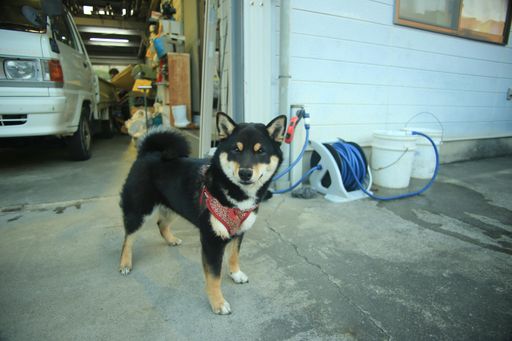Explore the benefits of dog massage in this article, where you'll find out how simple massage techniques can significantly improve your dog's health and relaxation.
Learn to use gentle, precise touches to reduce stress, ease muscle tension, and boost circulation in your pet. This guide provides easy-to-follow advice on the right massage points and techniques, helping you to enhance your pet's well-being.
Through this approach, you can strengthen your bond with your dog, ensuring their happiness and health are always taken care of.
Understanding Dog Massage
Dog massage is a therapeutic practice that not only promotes relaxation for canines but also supports their overall health and well-being. When applied with the correct pressure, massage can yield numerous benefits, akin to human massage therapy, enhancing a dog's circulation, reducing stress, and relieving muscle tension. Particularly for conditions like arthritis, where joint discomfort is prevalent, gentle massage can be highly beneficial. In fact, integrating specific techniques such as those found in the guide dog massage for arthritis can further aid in alleviating the symptoms associated with this condition
The application of massage in dogs necessitates an understanding of their anatomy. Certain techniques target specific muscle groups and soft tissues, requiring a careful approach to prevent discomfort. For instance, massage should be delivered using a gentle touch around sensitive areas such as the head and ears, progressing to firmer strokes on robust muscle areas like the neck and back.
Incorporating elements of acupressure and sometimes even acupuncture, dog massage is best conducted by trained professionals. Veterinarians may recommend these techniques as part of a dog's rehabilitation process or as a component of comprehensive physiotherapy.
Below is a brief overview of typical pressure points:
- Head and Ears: Gentle, circular motions
- Neck and Shoulders: Firmer kneading
- Back: Long, gentle strokes, followed by mild pressure
- Legs and Paws: Gentle manipulations, avoiding force
While many pet owners can learn basic massage techniques, consulting with a professional in the field, such as a veterinarian or a certified canine massage therapist, is recommended. They are equipped with a deeper understanding of canine physiology and can adapt the therapy to each dog's individual needs, possibly including integrative treatments such as acupressure. This ensures the practice is not only enjoyable for the dog but beneficial too.
Basic Massage Techniques
Massaging your dog can strengthen the bond between you and your pet, alleviate stress, and help muscles relax. It's essential to use gentle pressure and to understand your dog's body language during the massage to ensure their comfort and safety.
Starting the Massage
Before initiating a massage, one should create a calming atmosphere to help the dog relax. The process usually begins with slow, gentle petting, starting at the head and progressing to the back and other areas the dog favours. This initial contact sets a peaceful tone and prepares the muscles for a more in-depth massage.
Working with Different Body Parts
When massaging various body parts, it's important to apply techniques appropriate for each area.
- Head and Ears: Use a soft stroke to massage the head and a gentle circular motion for the ears.
- Neck and Shoulders: Apply careful kneading to release tension in the neck muscles and shoulders.
- Spine: Run hands along either side of the spine with mild pressure without pressing directly on the spine itself.
- Legs and Paws: Cautiously massage each leg with vertical strokes and flex the joints gently to enhance mobility. Paws can be massaged by applying light pressure on each pad.
- Feet and Toes: Massage feet with circular motions and stroke each toe individually but avoid pressing too hard.
Finishing the Massage
Concluding a massage session should be calming and rewarding. One can end the session with a series of long, soothing strokes from the head to the tail followed by some of their favourite rewards to make them feel loved and content.
Massage Routines for Specific Issues
Certain massage techniques can be particularly beneficial for dogs with specific issues. For instance:
- Arthritis or Chronic Pain: Focus on areas around the joints using motions that might help lessen inflammation and improve comfort.
- Injuries and Pain: Massage surrounding areas to an injury to promote circulation and healing, being mindful of the dog's pain threshold.
Safety and Signs of Discomfort
While giving a massage, owners should be vigilant for any signs of discomfort such as flinching, growling, or inactivity. If any discomfort is observed, they should stop immediately. One should be cautious not to press too hard, as excessive pressure can cause pain, especially in areas with injuries or inflammation. It's paramount to regularly consult with a veterinarian before starting a massage routine, especially for dogs with mobility issues.
These basic massage techniques, when applied with care and attention to the dog's responses, can support relaxation, reduce discomfort, and foster a stronger bond between the dog and its owner.
Health Benefits of Dog Massage
Dog massage is a therapeutic practice that supports canine health, enhancing physical well-being and mental stability. It leverages the power of touch to improve circulation, alleviate pain, and foster a serene mental state.
Physical Well-being
Regular massage for dogs can significantly improve blood circulation, which is pivotal in maintaining healthy muscle and tissue function. Enhanced blood flow not only delivers oxygen and nutrients more efficiently throughout the body but also aids in the removal of toxins from bodily tissues. This may contribute to a quicker healing process post-injury or surgery. Dog massage also helps relieve muscle tension and can reduce the discomfort associated with joint issues, which is especially beneficial for dogs with arthritis or mobility challenges.
Mental and Emotional Health
The act of massage can create a peaceful environment for dogs, helping them to feel calm and reduce stress. For dogs that experience anxiety, regular massage sessions can provide relaxation, promoting a sense of security and well-being. This practice not only lessens feelings of anxiety but can also strengthen the bond between pet and owner, as it is an intimate activity that involves care and close interaction.
Massage for Aging Dogs
As dogs age, they commonly face conditions like arthritis and general muscle weakness, which can be soothed through gentle pressure and massage. Massage for aging dogs focuses on maintaining mobility and managing pain, which in turn can aid in preserving their quality of life. Regular massage can help older dogs move more comfortably and with less difficulty, which is essential in keeping them active and healthy for as long as possible.
Advanced Techniques and Professional Help
Incorporating advanced massage techniques, such as acupressure and reflexology, can significantly enhance a dog's well-being, but it's vital to consider professional guidance for optimal safety and effectiveness.
Integrating Acupressure and Reflexology
When integrating acupressure into a canine massage routine, understanding and applying the appropriate pressure to specific pressure points is crucial. One such point is the Yin Tang, located at the forehead and often used to promote calmness. Another point, Yang Tang, can help improve concentration and cognition in dogs. Reflexology, involving more generalised pressure across paw pads and ears, supports overall balance in the dog's body systems.
Seeking Professional Assistance
It's recommended to seek professional assistance from someone trained in veterinary medicine when attempting more complex techniques, to avoid unintended harm. A certified veterinarian or a professional with expertise in canine therapy can provide guidance on how to safely apply these advanced methods. They can also aid in addressing specific health issues, thereby enhancing the dog's performance and quality of life through targeted massage therapy.
Key Takeaways
- Enhanced Physical Health: Dog massage improves circulation, eases muscle tension, and can alleviate pain from conditions like arthritis.
- Emotional and Mental Well-being: Regular massage reduces stress and anxiety in dogs, promoting a serene mental state.
- Stronger Pet-Owner Bond: The practice deepens the emotional connection between the dog and its owner.
- Personalised Techniques: Tailoring massage techniques to different body parts and individual dog needs is crucial.
- Safety and Professional Guidance: Always prioritise your dog’s comfort and seek professional advice when needed.
Dog massage emerges as a comprehensive approach to enhancing your dog's physical and emotional health. By employing specific techniques tailored to your dog's needs, you can significantly improve their well-being.
This practice not only eases physical discomfort but also offers a calming effect, reducing stress and anxiety. Importantly, it strengthens the bond between you and your pet, enriching your relationship through nurturing touch. Remember, while learning the right techniques is important, the heart of dog massage lies in the compassionate and understanding bond it builds.



















